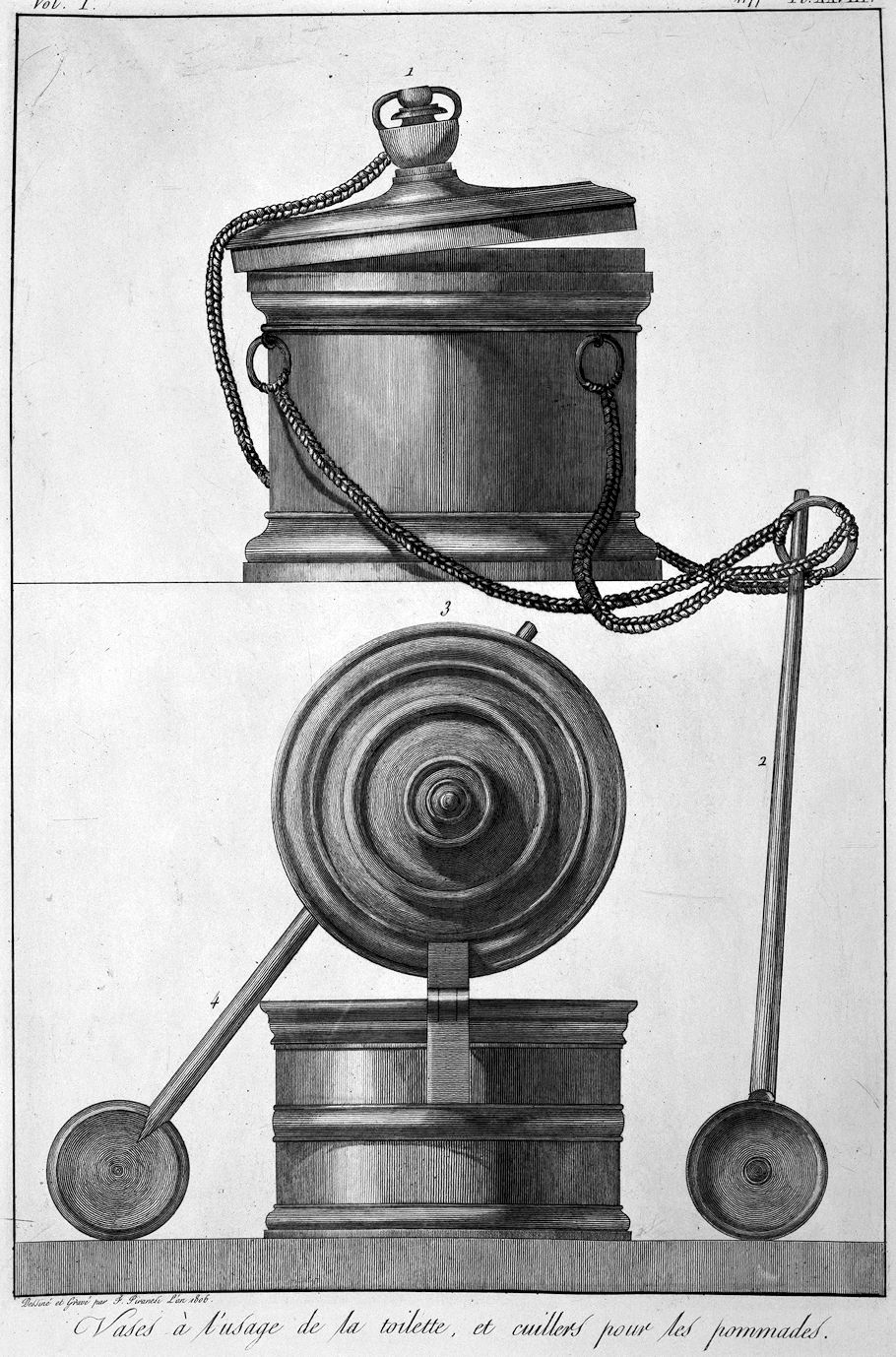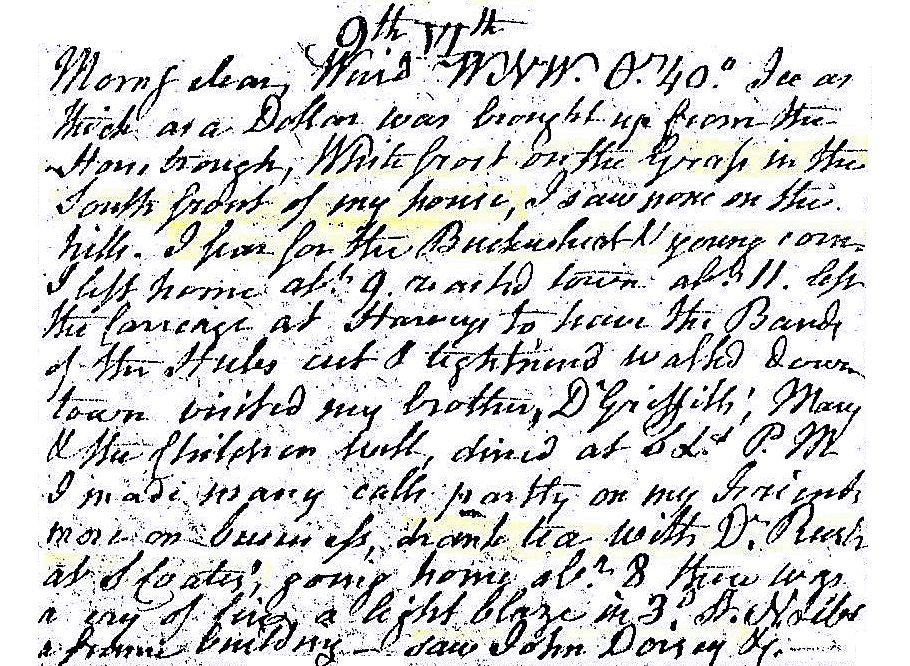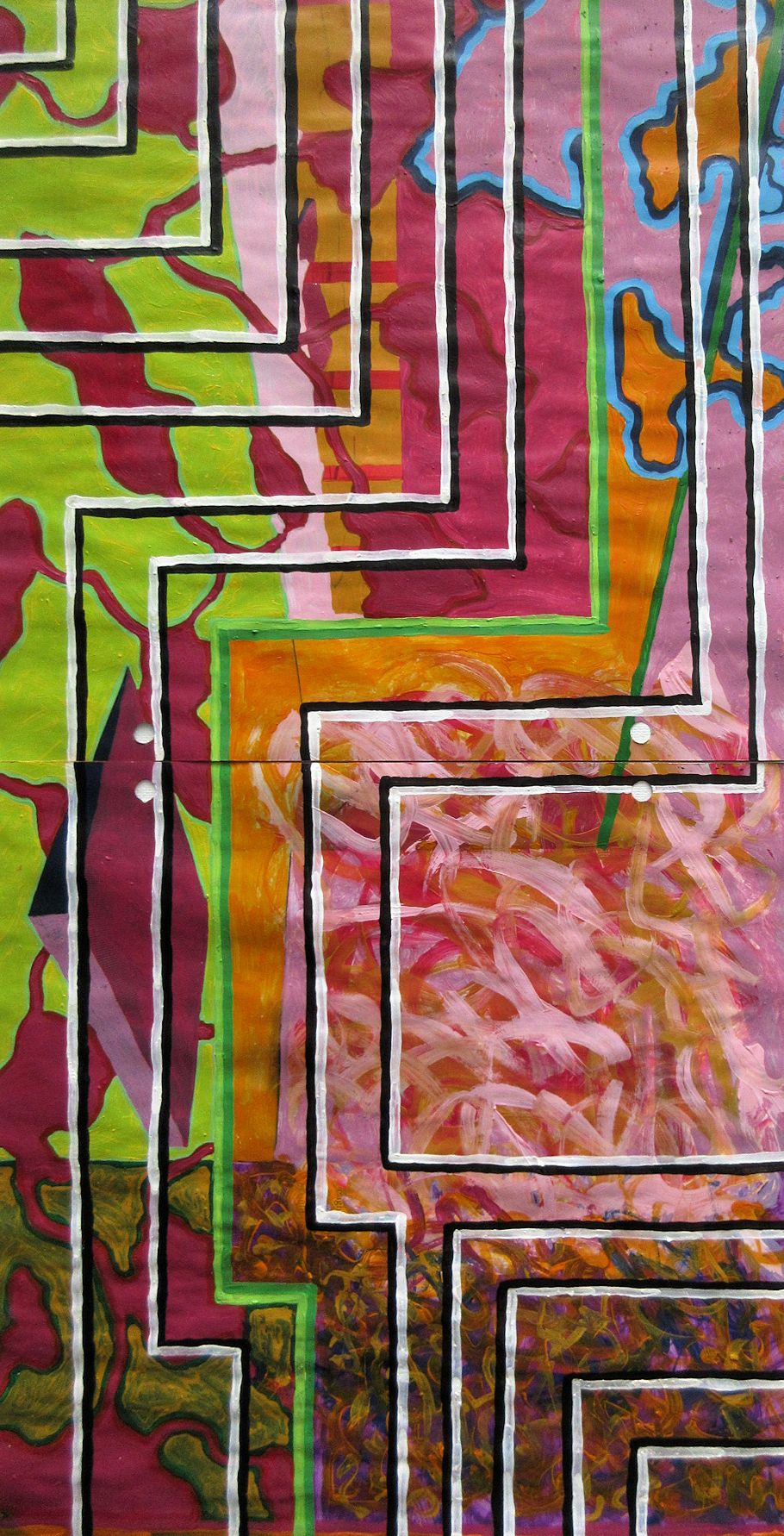9 October 1778 Friday
Piranesi told Laura that he would like it if she accompanied him to the Accademia de S. Luca meeting.
"I thought woman weren't allowed."
"Perhaps, but I don't think anyone's ever tried. And besides, I may need your support."
"Well, well. What should I wear?"
"You could be my American nun--red, white and blue."
"A red, white and blue nun. What vintage?"
"1812"
48 y.o. Francesco Piranesi 1806
Le AntichitÓ della Magna Grecia Parte III

Vases for toilet use, and spoons for ointments.
Drawn and Engraved by F. Piranesi Year 1806
9 October 1812 Friday

Morning clear. Wind WNW. Temp 40░. Ice as thick as a Dollar was brought up from the horse's trough. White frost on the grass in the south front of my house. I saw none on the hills. I fear for the buckwheat and young corn. I left home at 9. Reached town about 11. Left the carriage at Harvey's to have the bands of the hubs cut and tightened. Walked downtown, visited my brother, Dr. Griffith, Mary and the children first, dined at SL and PM made many calls partly on my friends more on business, drank tea with Dr. Rush at S. Coates. Going home about 8 there was a cry of fire and light blaze in 3rd St. Northern Liberties, a frame building. I saw J. Dorsey etc.
9 October 1994
20.
The human body is a clock, a timepiece. Rather than display the time it takes the earth to make one revolution on its axis, the human body displays the past, present, and the future of human civilization as we know it right now. The human body is a timepiece that displays history and human development.
23.
from "Duration and Time" in Encyclopedia Britannica (7-774c):
Duration and time are abstract terms covering a wide range of facts of experience: the fact, for instance, that one thing, state of event lasts longer or shorter than another, or that it comes so much before or after another, or that it has existed or will exist, or actually exists. Such facts (and a great many others like then) may be called temporal facts, and the notions or expressions that are used to deal with them may be called temporal notions or expressions. The interest of such notions and expressions is that, while they function quite smoothly in ordinary talk and thought, they readily give rise to profound puzzlements when looked at from the more detached standpoint of philosophy. But while older philosophers thought that such difficulties pointed to some radical inadequacy in our temporal notions (or even to some contradiction in the nature of things), many 20th Century philosophers, in particular those influenced by Ludwig Wittgenstein, tried to hold that most of these difficulties have their origin in a misunderstanding and abuse of the normal working of temporal notions and expressions.
26.
The human body, standing erect and with the arms outstretched, is a Timepiece. The passage of time is represented by an imaginary horizontal plane, the plane of the present, which slices through the body. The plane of the present starts at the feet and proceeds to move steadily up the body. In The Timepiece of Humanity, history, as we know it, begins when the plane of the present starts cutting through the soles of the feet. The end of history will occur when the plane of the present slices through the last bit of flesh at the top of the head.
29.
Vitruvius never said that the crotch was the center of the human body. He did, however, speak of a square that is created by the out-stretched arms and the height of the body. For Vitruvius, the center of the human body was the navel, with the qualifier of having the body laying on its back with the arms and legs out-stretched.
30.
Part of the Timepiece is a human figure with out-stretched arms overlaid by a system of concentric circles and squares centered on the crotch. The system of concentric circles and squares is derived from a diagram in Serlio's First Book of Architecture: Geometry. The use of a standing human figure follows a tradition, used extensively in the Renaissance, particularly related to the notion of the Vitruvian man.
31.
The Old Testament is before Christ, and is essentially the story of the struggle of man trying to unite himself with God. Biblically, and mythologically, this is where our history begins--when Adam and Eve walked out of the Garden. I am stressing walking because I am saying that history starts at the feet. Biblically, our human drama, our history, started with the action of walking [out of the garden].
9 October 2021

9 October 2022 Sunday
"Legrands says the Piranesi instructed Francesco in Roman history and the Latin language as soon as he could draw. He was sent to study at the French Academy and was destined for the church but, since the Rezzonico pope died before he was old enough to take orders, that plan was abandoned. He adds that he learned architecture from his father's friend Pierre-Adrien PÔris, drawing from Corvi of the French academy, landscape from Hackert and etching from Cunego and Volpato.
It is interesting to see how Francesco altered the balance of the firm's customers. He relied much less on the British connections and the dedications of, for instance, the plates of his edition of ancient statues were addressed to numerous Poles and Swedes and more Italians, especially from Venice, but Abbondio Rezzonico received a plate as did the Braschi cardinal who had succeeded G. B. Rezzonico as Majordomo to Pius VI."
Jonathan Scott, Piranesi (London: Academy Editions, 1975), p. 319.
9 October 2023 Monday
Metamorphic seems to best describe the type of calm I've been feeling the past week or so. Perhaps the "fear of unpreparedness" just isn't there. Plus, with each of the other epilogues, there's also come some sense of relief.
With regard to the tinder box our current world seems to be, I wonder if anyone has already hypothesized that history now happens via the capacity to fix itself. Instead of following fate, history presently follows destiny.
|